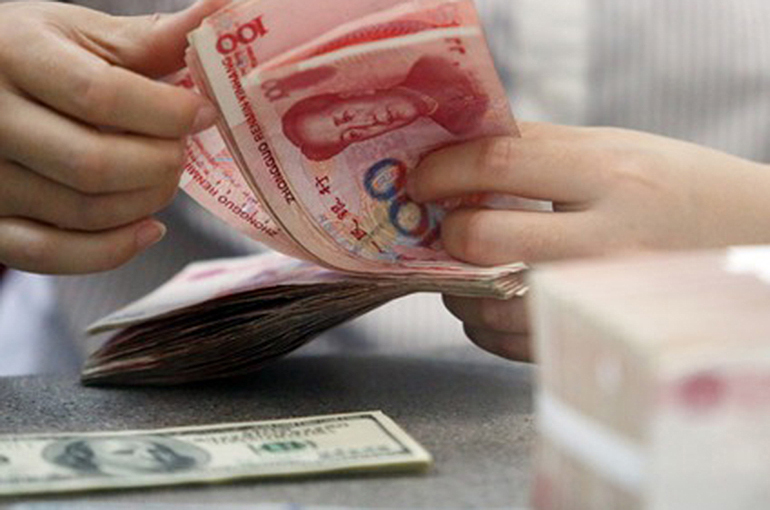 Offshore Chinese Yuan Gains Over 1,600 Pips Against US Dollar in Past Week
Offshore Chinese Yuan Gains Over 1,600 Pips Against US Dollar in Past Week(Yicai) Nov. 22 -- The offshore Chinese yuan has appreciated more than 1,600 pips against the US dollar in the past week, much faster than the decline in the US Dollar Index in the period.
The foreign exchange rate of the Chinese yuan against the dollar ended at 7.1432 yesterday, and opened at 7.3071 on Nov. 13, a decline of 2.2 percent. The US Dollar Index fell 1.93 percent to 103.59 in the period.
A round of short squeeze is the main reason behind the recent recovery of the Chinese yuan's exchange rate, said Zhou Hao, chief economist at Guotai Junan International Holdings.
Chinese economic indicators have recently stabilized to some degree, but the real estate sector is still performing poorly, so it is pretty hard to give a clear answer on how long this rebound will last, Zhou noted. But institutions tend to think that the Chinese yuan's fixing rate will play a crucial role, and the yuan's long positions will accumulate if the fixing stays strong in the several days to come, he added.
The People's Bank of China set the daily central parity rate of the US dollar-Chinese yuan almost 1,000 pips higher than the average spot rate in the previous several months, when the yuan was under larger depreciation pressure on the foreign exchange market. This shows the PBOC's intention to keep the redback stable.
Along with the strengthening of the Chinese yuan exchange rate against the US dollar, the gap between the central parity and spot rates keeps contracting, recently standing at less than 200 pips. The trend of the yuan’s central parity is likely to decide how long the short squeeze will last.
Another reason the Chinese yuan appreciated against the US dollar is that China will host its annual Central Economic Work Conference in mid-December. The economic, fiscal, and monetary policy directions for next year that will be outlined at the conference will also influence the exchange rate, according to Zhou.
Overall, the market should prepare itself for a further appreciation of the Chinese and more short squeeze, especially under the push of seasonal factors. November, December, and January have been peak months for forex settlement since 2017, characterized by notable appreciations of the Chinese yuan, with smaller restraints on monetary policies from the forex rate perspective, said Wang Qiangsong, head of the research division of Nanyin Wealth Management.
But marginal effects will fade as time goes by. Particularly, the China-US interest spread will remain big, and those doing carry trade will likely enter the market amid the Chinese yuan's short-term surge, buying long positions of the US dollar again to earn more interest margin.
Larger turmoil will likely occur on the market next month, when the US Federal Reserve will hold its rate-setting meeting, and China will hold its 2023 Central Economic Work Conference, Matt Simpson, a senior analyst at Forex.Com, told Yicai.
Editors: Liao Shumin, Futura Cotaglione